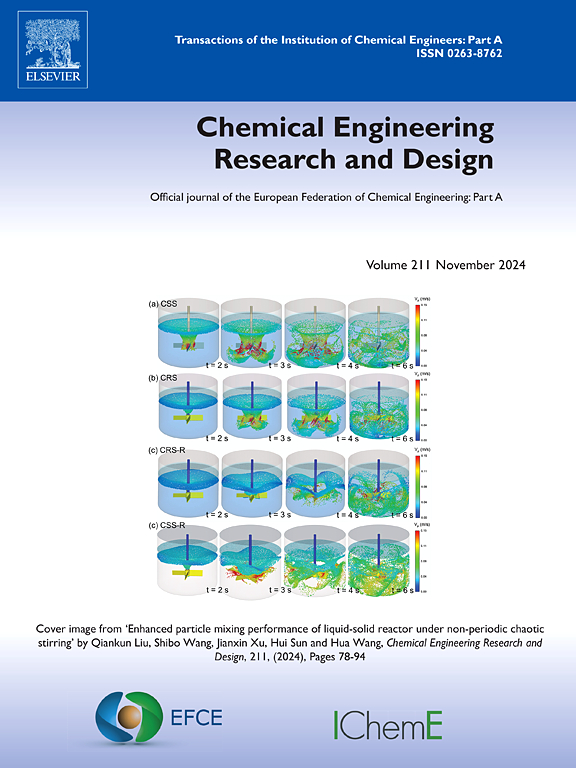Multivariate optimization of CO2 conversion on Ce/Tb oxides by chemical looping
IF 3.7
3区 工程技术
Q2 ENGINEERING, CHEMICAL
引用次数: 0
Abstract
The catalytic conversion of CO2 into valuable chemicals, such as CO, offers a promising solution to mitigate greenhouse gas emissions and promote sustainable energy cycles. In this study, cerium-terbium oxides were optimized for CO production through thermochemical cycles, utilizing a response surface methodology. Optimization was performed for both the first cycle and the average of three cycles to identify key parameters, including calcination temperature, terbium concentration, reduction time, oxidation time, and cycle temperature. The cubic response surface model demonstrated strong predictive capabilities (R2 > 0.99) and highlighted significant interactions between key variables. These findings underscore the potential of cerium-terbium oxides as robust, tunable materials for thermochemical CO2 conversion, offering insights for industrial application in energy-efficient processes. For the first cycle and the average over three cycles, the optimal terbium concentration (0.22–0.23 mol) was consistent, while reaction times and temperatures significantly impacted CO production, with oxidation time being a critical factor for achieving high conversion in shorter times. An alternative optimization approach minimized operational energy by reducing reaction temperatures and times. Additionally, electron paramagnetic resonance analysis revealed the presence of paramagnetic centers associated with oxygen vacancies, confirming the defect-rich nature of the reduced cerium-terbium oxide and its potential relevance for CO2 activation.
化学环法制备Ce/Tb氧化物转化CO2的多元优化
将二氧化碳催化转化为CO等有价值的化学物质,为减少温室气体排放和促进可持续能源循环提供了一个有希望的解决方案。在这项研究中,利用响应面法,通过热化学循环优化了铈-铽氧化物的CO生产。对第一个循环和三个循环的平均值进行了优化,确定了关键参数,包括煅烧温度、铽浓度、还原时间、氧化时间和循环温度。三次响应面模型具有较强的预测能力(R2 >;0.99),并强调了关键变量之间的重要相互作用。这些发现强调了铈-铽氧化物作为热化学CO2转化的坚固、可调材料的潜力,为节能过程中的工业应用提供了见解。对于第一个循环和三个循环的平均值,最佳的铽浓度(0.22-0.23 mol)是一致的,而反应时间和温度对CO的产量有显著影响,氧化时间是在较短时间内实现高转化率的关键因素。另一种优化方法是通过降低反应温度和时间来最小化操作能量。此外,电子顺磁共振分析揭示了与氧空位相关的顺磁中心的存在,证实了还原铈铽氧化物的富缺陷性质及其与CO2活化的潜在相关性。
本文章由计算机程序翻译,如有差异,请以英文原文为准。
求助全文
约1分钟内获得全文
求助全文
来源期刊

Chemical Engineering Research & Design
工程技术-工程:化工
CiteScore
6.10
自引率
7.70%
发文量
623
审稿时长
42 days
期刊介绍:
ChERD aims to be the principal international journal for publication of high quality, original papers in chemical engineering.
Papers showing how research results can be used in chemical engineering design, and accounts of experimental or theoretical research work bringing new perspectives to established principles, highlighting unsolved problems or indicating directions for future research, are particularly welcome. Contributions that deal with new developments in plant or processes and that can be given quantitative expression are encouraged. The journal is especially interested in papers that extend the boundaries of traditional chemical engineering.
 求助内容:
求助内容: 应助结果提醒方式:
应助结果提醒方式:


